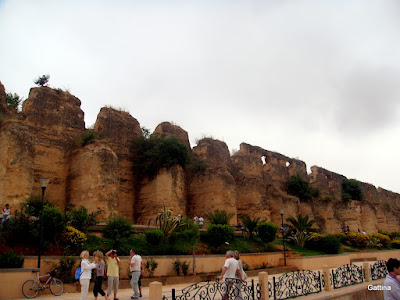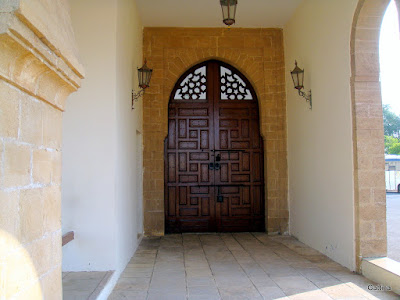While we were in Rabat (Morocco) we also visited Chellah, a site which dates from Roman occupation circa 40 AD. It is one of the earliest clearly identifiable settlements of man in Morocco.
Between 1300 and 1600 AD, Rabat and Chellah were resettled by the Merinid Dynasty. Circa 1350 the Merinid sultan, founded a mosque at Chellah, and the magnificent extant principal gate. The sultan Abu I-Hasan was entombed within the Moorish part of the Chellah complex. Many of the structures in Chellah were damaged by the 1755 Lisbon earthquake. The site has been converted now to a garden and also a place for concerts.
If you want to know the whole history go here and here
The very impressive entrance
where we were greated by this drummer, pictures to be taken against payment of course.
From outside
Chellah today is also a place where concernts take place and films are shot
This is the very old part which remained from the Romans
and the rests of the mosque
with its tombs. Some of them are very well preserved as you can see from the mosaic
The guardian lady fed fishes which looked like very fat snakes, I forgot the name. The bassin was the ancient watering system of the Romans
The garden was real beautiful, with lots of plants, flowers and trees. But what amazed me the most were the birds living here. I have never ever seen so many storks together. It looks as if they were meeting here coming from all over the world. There were hundreds and hundreds. There were lots of Ibises too, of all kind and colors and other birds. It was very noisy, especially the storks who were rattling in concerts !






.JPG)



.JPG)


.JPG)
.JPG)
.JPG)
.JPG)
.JPG)
























.jpg)

.jpg)
.jpg)
.jpg)
.jpg)
.jpg)
.jpg)

.JPG)

.jpg)




.JPG)
.JPG)
.JPG)
.JPG)
.JPG)



